How To Plan a Safari In Africa
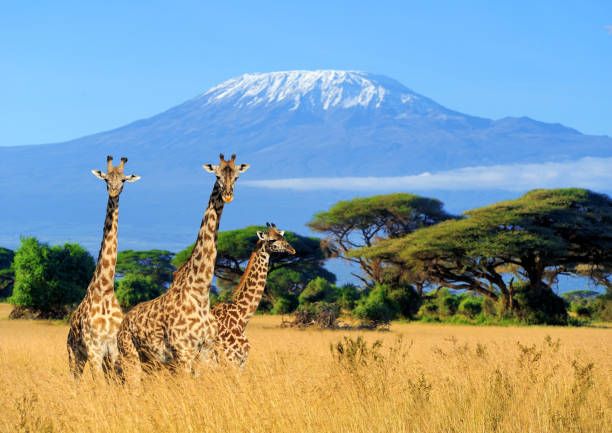
Africa is a continent of diverse landscapes, cultures, and wildlife, offering a unique and unparalleled experience to its visitors. From its vast savannas to its lush rainforests, Africa is a land of breathtaking beauty and wonder.
One of the most iconic features of Africa is its wildlife. The continent is home to some of the world's most magnificent and exotic animals, including lions, elephants, giraffes, cheetahs, gorillas, and many more.
National parks and reserves across the continent provide visitors with the opportunity to see these incredible creatures up close and personal.
But Africa's beauty extends beyond its wildlife. The continent is home to some of the world's most stunning natural wonders, such as the Victoria Falls, Mount Kilimanjaro, the Sahara Desert, and the Okavango Delta.
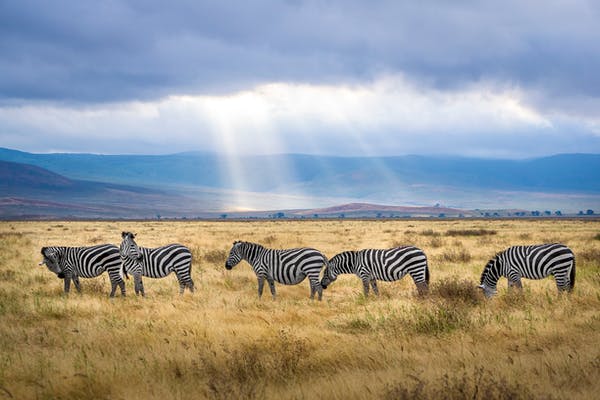
The vibrant colors of the African sunset and the starry night sky are also unforgettable sights to behold.
Moreover, Africa is a continent of rich and diverse cultures. With over 3,000 distinct ethnic groups, each with its own unique traditions and customs, Africa is a melting pot of diversity.
From the ancient pyramids of Egypt to the Maasai Mara of Kenya, Africa is a treasure trove of cultural heritage.
In addition, Africa is home to some of the world's most hospitable people, who welcome visitors with open arms and warm smiles.
The continent's unique blend of languages, music, art, and cuisine provides visitors with a rich and immersive cultural experience.
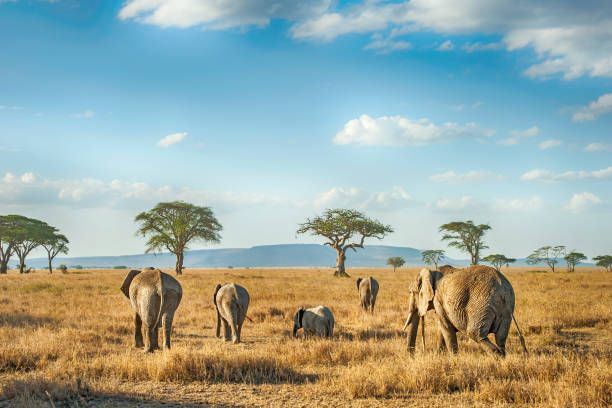
In recent years, sustainable tourism has gained traction in Africa, with many countries and conservation organizations working to protect the continent's natural resources and preserve its wildlife.
Responsible tourism practices such as ecotourism, wildlife conservation, and community-based tourism are gaining popularity and helping to ensure that future generations can enjoy Africa's beauty and wonders.
In conclusion, Africa's beauty is a feast for the senses, a tapestry of diverse landscapes, cultures, and wildlife.
It is a continent that inspires and captivates visitors, providing a unique and unforgettable experience.
Planning a safari in Africa
Here's a guide on how to plan a safari in Africa, from selecting your destination to booking your accommodation.
1. Choose Your Destination
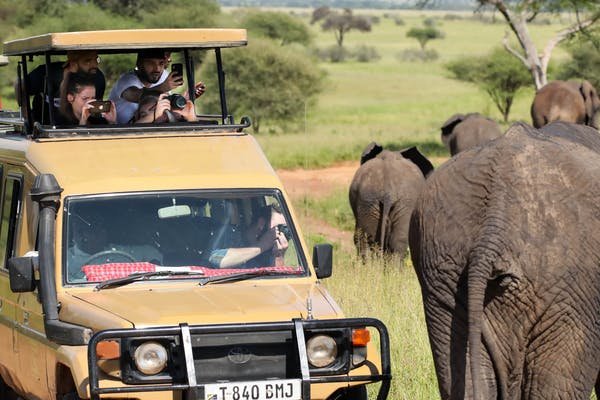
The first step in planning a safari in Africa is to decide where you want to go. Africa is home to many diverse countries and national parks, each with its own unique wildlife and scenery.
Some popular safari destinations in Africa include Tanzania, Kenya, South Africa, Botswana, and Namibia.
Research each destination to determine which one is best suited for you. Consider the time of year you want to travel, the type of wildlife you want to see, and your budget.
It is also important to check any travel restrictions or health advisories before finalizing your plans.
Choosing a safari destination can be a daunting task, given the many options available in Africa. Here are some factors to consider when selecting a safari destination:
Wildlife: Africa is known for its wildlife, so it is important to consider the type of animals you want to see.
Some destinations have a higher concentration of certain animals than others, so research the specific animals you want to see and choose a destination that offers a good chance of spotting them.
Time of year: Wildlife migration patterns and weather conditions vary throughout the year, so it is essential to consider the best time to visit a particular destination.
For instance, the Great Migration in East Africa takes place between July and October, while the best time to visit Southern Africa is during the dry season between May and October.
Budget: Safari destinations can vary significantly in cost, from budget-friendly to luxurious options.
It is essential to consider your budget and choose a destination that offers the best value for your money.
Safety: Safety should always be a top consideration when choosing a safari destination. Research the safety record of the country and the particular safari company you plan to use.
Accommodation: The type of accommodation available in a destination can vary from camping to luxury lodges. Consider the level of comfort you require and choose a destination that offers accommodation that suits your preferences.
Accessibility: Some safari destinations can be remote and challenging to access, while others are more easily accessible. Consider your travel preferences and choose a destination that is easy to reach and navigate.
Cultural experiences: Some destinations offer unique cultural experiences, such as visiting traditional tribes or learning about local customs and traditions. Consider the cultural experiences you would like to have and choose a destination that offers them.
By considering these factors and doing proper research, you can choose the perfect safari destination that offers a unique and unforgettable experience in Africa.
Popular Safari Destinations in Africa
The choice of destination will depend on your interests, budget, time of year, and other factors.
Tanzania
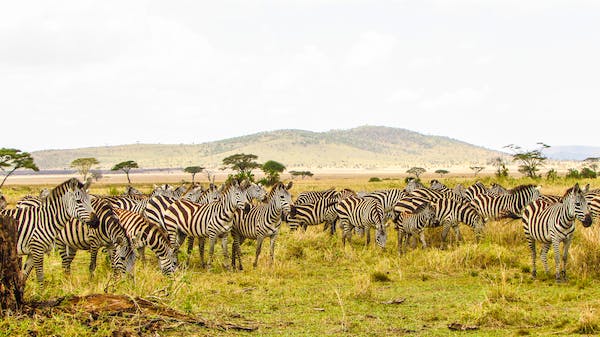
Tanzania is a popular safari destination in East Africa known for its abundant wildlife, stunning landscapes, and rich culture.
Here are some of the top attractions and activities to consider when planning a safari in Tanzania:
Serengeti National Park: The Serengeti is one of the most famous national parks in Africa, known for its annual wildebeest migration and excellent wildlife viewing opportunities.
Visitors can also enjoy hot air balloon rides over the park, walking safaris, and cultural tours to nearby Maasai villages.
Mount Kilimanjaro: Africa's highest mountain and one of the most iconic landmarks in Tanzania, Mount Kilimanjaro is a must-visit for adventure enthusiasts. Climbing the mountain can take between five to nine days, depending on the route.
Ngorongoro Crater: The Ngorongoro Crater is a UNESCO World Heritage Site and a natural wonder of the world.
It is home to an incredible concentration of wildlife, including lions, elephants, and rhinos.
Visitors can also explore nearby Olduvai Gorge, one of the most important archaeological sites in the world.
Zanzibar: Zanzibar is an archipelago off the coast of Tanzania known for its stunning beaches, turquoise waters, and rich history.
Visitors can explore the UNESCO-listed Stone Town, go on spice tours, or simply relax on the white sandy beaches.
Tarangire National Park: Tarangire National Park is known for its large elephant population, stunning baobab trees, and varied landscapes.
Visitors can enjoy game drives, walking safaris, and cultural tours to nearby Maasai villages.
Lake Victoria: Lake Victoria is the largest lake in Africa and a popular destination for fishing, birdwatching, and cultural tours.
Visitors can also explore nearby towns and markets and learn about the local way of life.
These are just a few examples of the many attractions and activities available in Tanzania.
With its diverse landscapes, incredible wildlife, and rich culture, Tanzania is an unforgettable destination for any safari enthusiast.
Kenya
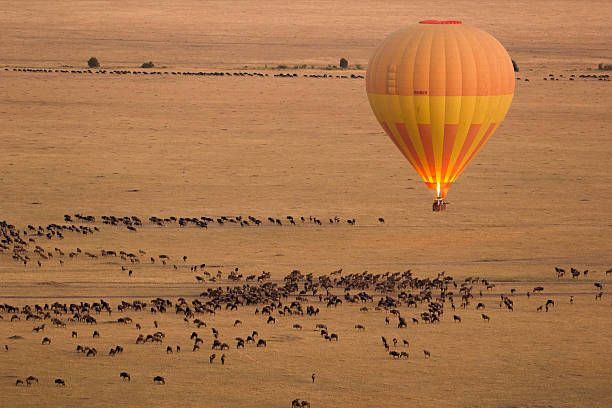
Kenya is another top safari destination in East Africa known for its abundant wildlife, stunning landscapes, and vibrant culture.
Here are some of the top attractions and activities to consider when planning a safari in Kenya:
Masai Mara National Reserve: The Masai Mara is one of the most famous wildlife reserves in Africa, known for its abundant wildlife, including the Big Five (lion, elephant, buffalo, leopard, and rhino), and the annual wildebeest migration.
Visitors can enjoy game drives, hot air balloon rides, and cultural tours to nearby Maasai villages.
Amboseli National Park: Amboseli is a small but beautiful national park located at the foot of Mount Kilimanjaro.
It is known for its large elephant herds, stunning views of Mount Kilimanjaro, and the opportunity to see some of the world's largest elephants.
Samburu National Reserve: Samburu is a remote national reserve located in northern Kenya, known for its unique wildlife, including the Somali ostrich, Grevy's zebra, and the reticulated giraffe. Visitors can also enjoy cultural tours to nearby Samburu villages.
Lake Nakuru National Park: Lake Nakuru is a beautiful national park known for its large population of flamingos and other bird species, as well as its rhino sanctuary.
Visitors can enjoy game drives and birdwatching, as well as walking safaris and cultural tours.
Tsavo National Parks: Tsavo is the largest national park in Kenya, with two separate parks - Tsavo East and Tsavo West.
The parks offer a wide range of landscapes, including savannah, hills, and mountains, as well as a large population of wildlife, including the Big Five.
Visitors can enjoy game drives, walking safaris, and cultural tours to nearby communities.
Mombasa: Mombasa is a coastal city in Kenya known for its beautiful beaches, rich history, and vibrant culture.
Visitors can explore the old town, visit historic forts and museums, or simply relax on the beach.
These are just a few examples of the many attractions and activities available in Kenya.
With its diverse landscapes, incredible wildlife, and rich culture, Kenya is an unforgettable destination for any safari enthusiast.
South Africa
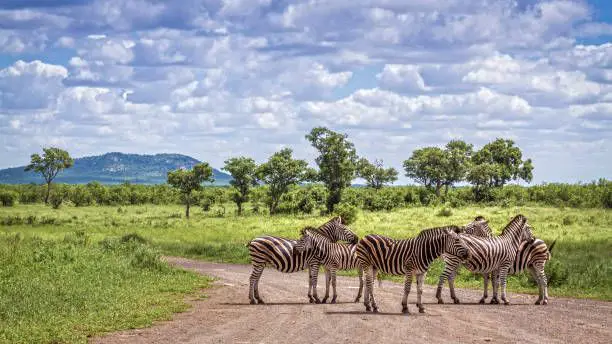
South Africa is a popular safari destination in southern Africa known for its diverse landscapes, incredible wildlife, and rich culture.
Here are some of the top attractions and activities to consider when planning a safari in South Africa:
Kruger National Park: Kruger is one of the most famous national parks in Africa, known for its abundant wildlife, including the Big Five, and its excellent safari experiences.
Visitors can enjoy game drives, walking safaris, and cultural tours to nearby communities.
Cape Town: Cape Town is a vibrant city located on the southwestern coast of South Africa, known for its stunning beaches, mountains, and vibrant culture.
Visitors can explore the city's museums, art galleries, and historic landmarks, or take a cable car ride up to Table Mountain for breathtaking views.
Garden Route: The Garden Route is a scenic coastal drive in South Africa, known for its stunning landscapes, quaint towns, and unique wildlife.
Visitors can explore the area's beaches, forests, and mountains, or go whale watching and shark cage diving.
Kgalagadi Transfrontier Park: Kgalagadi is a remote national park located in the Kalahari Desert, known for its unique wildlife, including the black-maned Kalahari lion, as well as its stunning landscapes and starry night skies.
Visitors can enjoy game drives, walking safaris, and cultural tours to nearby communities.
Sabi Sands Game Reserve: Sabi Sands is a private game reserve located adjacent to Kruger National Park, known for its exclusive safari experiences and luxurious accommodations.
Visitors can enjoy game drives, walking safaris, and cultural tours, as well as spa treatments and other indulgent activities.
Robben Island: Robben Island is a historic island located off the coast of Cape Town, known for its prison where Nelson Mandela was held for 18 years.
Visitors can take a ferry to the island and explore the prison and other historic landmarks.
These are just a few examples of the many attractions and activities available in South Africa.
With its diverse landscapes, incredible wildlife, and rich culture, South Africa is an unforgettable destination for any safari enthusiast.
Botswana
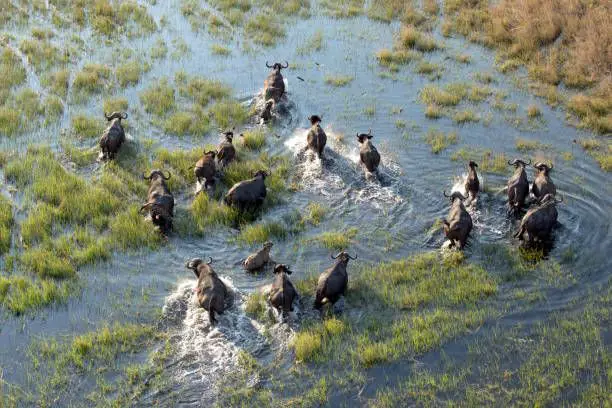
Botswana is a landlocked country in southern Africa known for its pristine wilderness, abundant wildlife, and unique safari experiences.
Here are some of the top attractions and activities to consider when planning a safari in Botswana:
Okavango Delta: The Okavango Delta is a vast wetland area in northern Botswana, known for its stunning landscapes, unique wildlife, and diverse safari experiences.
Visitors can enjoy game drives, walking safaris, mokoro (traditional dugout canoe) rides, and cultural tours to nearby communities.
Chobe National Park: Chobe is a large national park in northern Botswana, known for its abundant elephant populations and unique river safari experiences.
Visitors can enjoy game drives, river cruises, and cultural tours to nearby communities.
Kalahari Desert: The Kalahari is a vast desert area that covers much of Botswana, known for its unique wildlife, stunning landscapes, and cultural experiences.
Visitors can enjoy game drives, walking safaris, and cultural tours to nearby communities.
Makgadikgadi Pans: The Makgadikgadi Pans are a series of salt flats in northern Botswana, known for their stark beauty, unique wildlife, and cultural experiences.
Visitors can enjoy game drives, walking safaris, and cultural tours to nearby communities.
Moremi Game Reserve: Moremi is a large game reserve located in the Okavango Delta, known for its diverse wildlife, stunning landscapes, and exclusive safari experiences.
Visitors can enjoy game drives, walking safaris, and cultural tours to nearby communities.
Tsodilo Hills: The Tsodilo Hills are a UNESCO World Heritage Site located in northwest Botswana, known for their ancient rock art and cultural significance.
Visitors can explore the area's many rock art sites and learn about the local history and culture.
These are just a few examples of the many attractions and activities available in Botswana.
With its pristine wilderness, abundant wildlife, and unique safari experiences, Botswana is an unforgettable destination for any safari enthusiast.
Namibia
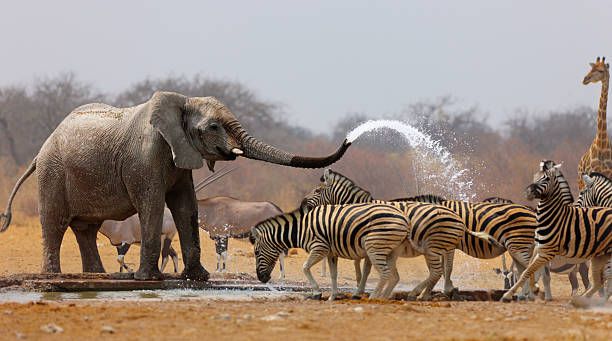
Namibia is a vast and diverse country located in southern Africa, known for its stunning landscapes, unique wildlife, and rich cultural heritage.
Here are some of the top attractions and activities to consider when planning a safari in Namibia:
Etosha National Park: Etosha is a large national park in northern Namibia, known for its abundant wildlife, including elephants, lions, and rhinos, and its unique salt pan landscape.
Visitors can enjoy game drives, guided walks, and cultural tours to nearby communities.
Sossusvlei: Sossusvlei is a stunning desert area located in central Namibia, known for its towering sand dunes, unique wildlife, and breathtaking sunsets.
Visitors can enjoy guided walks, hot air balloon rides, and cultural tours to nearby communities.
Skeleton Coast: The Skeleton Coast is a remote and rugged coastline in northern Namibia, known for its unique wildlife, including desert-adapted elephants and lions, and its haunting shipwrecks.
Visitors can enjoy scenic flights, guided walks, and cultural tours to nearby communities.
Damaraland: Damaraland is a rugged and remote region in northwest Namibia, known for its stunning landscapes, unique wildlife, and cultural heritage.
Visitors can enjoy guided walks, cultural tours to nearby communities, and visits to ancient rock art sites.
Caprivi Strip: The Caprivi Strip is a long and narrow stretch of land in northeastern Namibia, known for its diverse wildlife, including elephants, hippos, and crocodiles, and its stunning river landscapes.
Visitors can enjoy boat safaris, game drives, and cultural tours to nearby communities.
Himba Tribe: The Himba are a semi-nomadic tribe of herders and farmers who live in northern Namibia, known for their unique cultural heritage, traditional dress, and body painting.
Visitors can learn about their way of life, customs, and traditions through cultural tours and interactions with local communities.
These are just a few examples of the many attractions and activities available in Namibia. With its stunning landscapes, unique wildlife, and rich cultural heritage, Namibia is an unforgettable destination for any safari enthusiast.
2. Choose the time of year
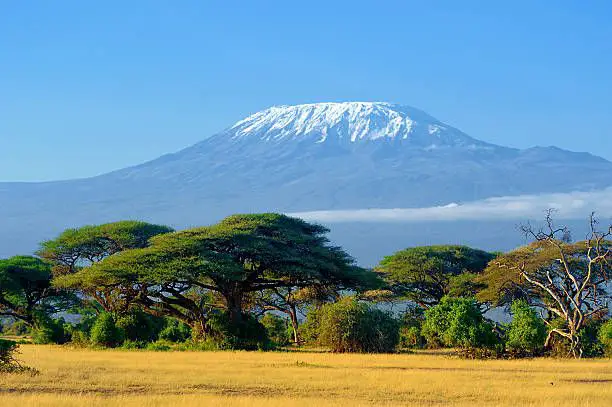
The best time to go on a safari in Africa depends on the location you have chosen and the type of experience you are looking for. Here are some general guidelines for choosing the time of year for your safari:
1. Peak season: The peak season for safaris in most African countries is during the dry season, which usually runs from June to October.
This is the best time to view wildlife as animals gather around waterholes and rivers, making them easier to spot.
However, this is also the busiest time of year, and prices for accommodation and safaris tend to be higher.
2. Low season: The low season for safaris is during the rainy season, which varies depending on the location.
This is the time of year when you are most likely to find discounted rates for accommodation and safaris.
However, the rain can make it difficult to spot wildlife, and some areas may be inaccessible due to flooding.
3. Shoulder season: The shoulder season falls between the peak and low seasons and is a great time to go on a safari if you want to avoid the crowds but still have a good chance of seeing wildlife.
The shoulder season varies depending on the location, but it generally falls between April and June or November and December.
4. Migration season: If you want to witness the Great Migration in East Africa, the best time to visit is from July to October when the wildebeest and zebra herds are crossing the Mara River.
This is the busiest time of year for safaris in the Serengeti and Masai Mara, and prices tend to be higher.
Remember, the best time to go on a safari depends on your interests and preferences.
Research the weather patterns and migration patterns of the animals to choose the ideal time for your trip.
3. Decide on the type of safari
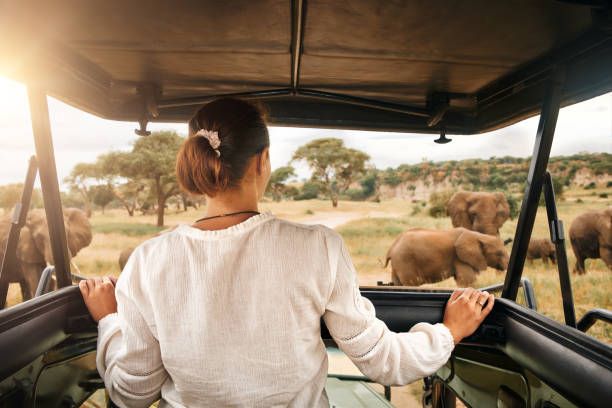
There are different types of safaris to choose from, and each type has its advantages and disadvantages. Here are some of the most popular types of safaris:
1. Guided safari: A guided safari is led by an experienced guide who will take you on game drives and provide you with information about the animals and their behavior.
This is a great option if you want to learn more about the wildlife and the environment.
2. Self-drive safari: A self-drive safari allows you to explore the wilderness on your own terms. You will need to rent a vehicle and navigate the park yourself. This is a good option if you want more flexibility and independence during your safari.
3. Private safari: A private safari is tailored to your interests and preferences, and you will have a dedicated guide and vehicle for your group. This is a great option if you want a more personalized experience and have specific requirements.
4. Group safari: A group safari is a more affordable option and allows you to share the experience with other travelers. This is a good option if you want to meet new people and share the cost of the safari.
5. Walking safari: A walking safari allows you to explore the wilderness on foot, accompanied by an armed ranger. This is a great option if you want a more immersive experience and to get closer to nature.
6. Balloon safari: A balloon safari allows you to view the wildlife and landscapes from a hot air balloon. This is a unique and memorable experience, but it can be more expensive than other types of safaris.
When deciding on the type of safari, consider your interests, budget, and level of comfort. Each type of safari offers a different experience, so choose the one that best suits your preferences.
4. Choose your accommodation
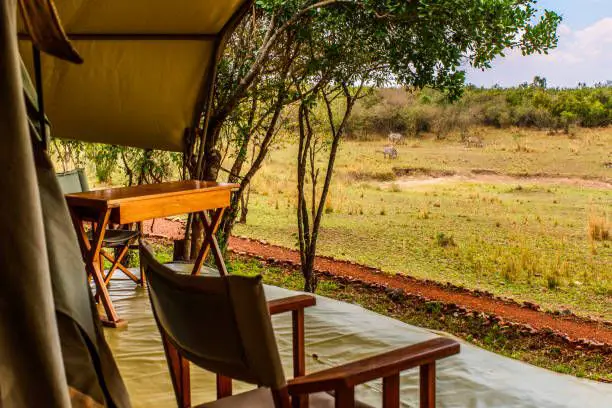
Choosing the right accommodation for your safari is an important part of the planning process.
There are a variety of options available, from budget-friendly campsites to luxurious lodges. Here are some factors to consider when choosing your accommodation:
1. Location: Consider the location of the accommodation in relation to the national park or reserve you plan to visit.
Ideally, you want to choose accommodation that is close to the park entrance or the areas where you plan to go on game drives.
2. Type of accommodation: Decide what type of accommodation you prefer. Tented camps and lodges are popular choices, but there are also budget-friendly options such as campsites and basic lodges.
3. Amenities: Consider what amenities you need or want, such as a swimming pool, spa, or restaurant. Some accommodations may offer Wi-Fi or laundry facilities, which can be important if you are on a longer trip.
4. Level of luxury: Determine what level of luxury you are looking for in your accommodation. Some lodges and camps offer luxury amenities such as private plunge pools, outdoor showers, and gourmet meals, while others may be more basic.
5. Price: Consider your budget when choosing your accommodation. Prices can vary significantly depending on the location, type of accommodation, and level of luxury.
6. Reviews: Read reviews from previous guests to get an idea of the quality of the accommodation and the level of service provided.
Remember, the accommodation you choose will have an impact on your overall safari experience. Consider your preferences, budget, and needs when making your choice.
5. Book your safari
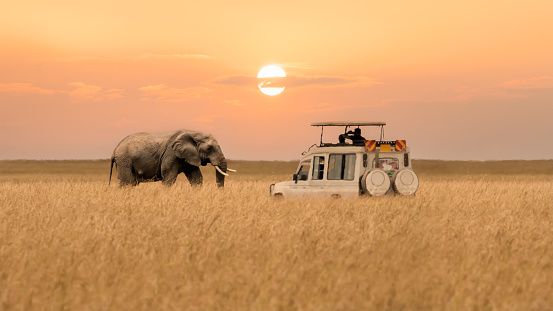
Booking your safari can be done in several ways. Here are some options to consider:
1. Online travel agencies: There are many online travel agencies that offer safari packages, which can be a convenient way to book your trip. Some popular ones include Getyourguide, Expedia, TripAdvisor, and SafariBookings.
2. Tour operators: Tour operators specialize in organizing safaris and can create custom itineraries based on your preferences.
You can find tour operators through online searches, travel agents, or recommendations from other travelers.
3. Direct bookings: If you have already chosen the accommodation and activities you want to do, you can book directly with the lodges or tour companies.
4. Travel agents: Travel agents can help you plan your safari and make all the necessary bookings. They can also provide advice on the best time to go, the most suitable accommodations, and the activities available.
When booking your safari, make sure to research the company you are booking with to ensure they are reputable and provide quality service.
Check reviews from previous travelers and ensure that the company is licensed and accredited by the relevant authorities.
It's also important to read the terms and conditions of the booking, including cancellation policies and payment requirements.
6. Prepare for your trip
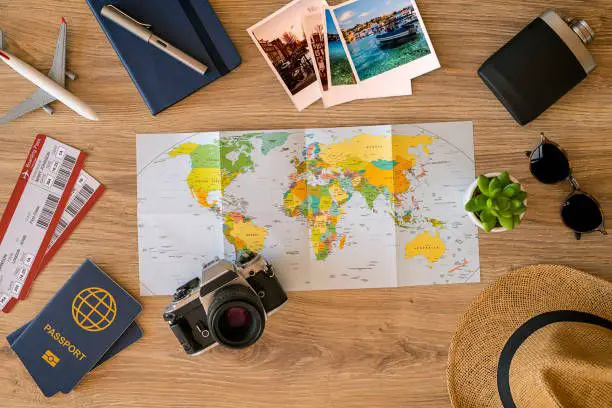
Preparing for your safari trip is important to ensure that you have a comfortable and enjoyable experience. Here are some things to consider when preparing for your safari:
1. Check visa and vaccination requirements: Depending on the country you are visiting, you may need a visa and certain vaccinations.
Check the requirements and make sure you have the necessary documentation before you travel.
2. Pack appropriate clothing: The climate in Africa can vary greatly, so pack clothing appropriate for the season and the activities you plan to do.
Light, breathable clothing is recommended, as well as comfortable shoes and a hat to protect you from the sun.
It's also important to pack warm clothing for early morning game drives, as it can get chilly.
3. Bring the right equipment: Depending on the activities you plan to do, you may need to bring certain equipment such as binoculars, a camera, and a flashlight.
Some lodges provide these items, so check with your accommodation before you pack.
4. Familiarize yourself with the wildlife and environment: Research the wildlife and environment of the area you will be visiting to get an idea of what to expect.
This can help you prepare for the climate and understand the behavior of the animals you will encounter.
5. Stay hydrated: It's important to drink plenty of water during your safari to stay hydrated. Bring a refillable water bottle and fill it up at your accommodation before heading out on your activities.
6. Follow the rules and guidelines: Follow the rules and guidelines provided by your guide and the national park authorities to ensure your safety and the protection of the environment and wildlife.
By preparing for your trip, you can ensure a comfortable and enjoyable safari experience.
7. Enjoy your safari
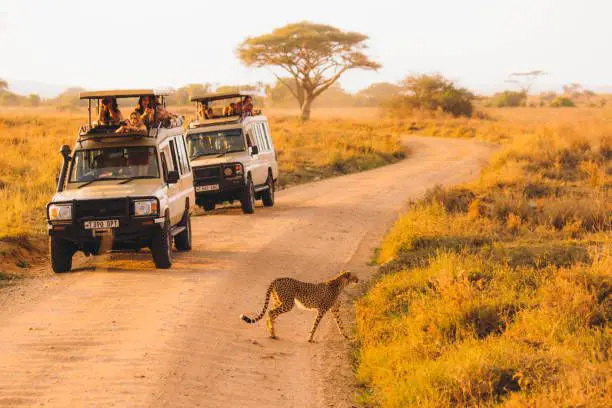
Enjoying your safari is all about being present and taking in the incredible experience of being in the African wilderness. Here are some tips to help you fully enjoy your safari:
1. Be open-minded: Go into your safari with an open mind and be prepared for the unexpected. You may see incredible wildlife sightings or have unexpected weather conditions, so embrace the experience as it comes.
2. Stay present: During game drives or other activities, focus on being present in the moment and enjoying the scenery and wildlife around you.
Put away your phone and other distractions to fully immerse yourself in the experience.
3. Listen to your guide: Your guide is there to ensure your safety and provide you with a wealth of knowledge about the wildlife and environment.
Listen to their instructions and ask questions to learn more about the area and the animals you are seeing.
4. Take breaks: Safari activities can be tiring, so take breaks when you need them. Relax at your accommodation or take a nap during the heat of the day.
5. Connect with nature: Take time to appreciate the natural environment and the incredible wildlife around you. Sit quietly and observe the animals, or take a walk to connect with nature on a deeper level.
6. Keep a journal: Record your experiences in a journal to capture the memories of your safari. Write down your favorite wildlife sightings, experiences, and observations.
By fully immersing yourself in the safari experience and embracing all it has to offer, you can enjoy a truly unforgettable adventure.
